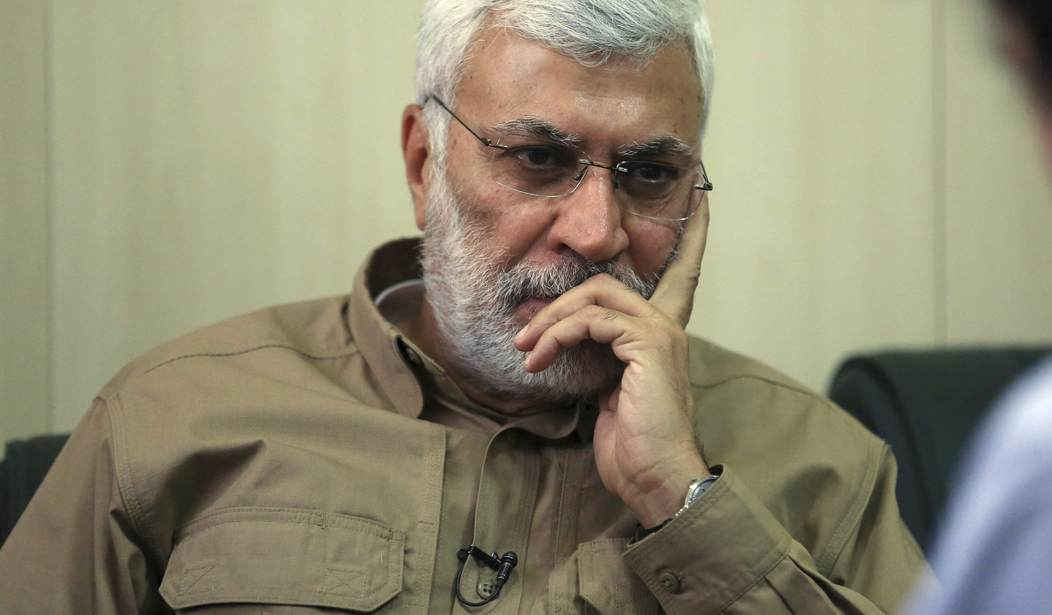Iranian Revolutionary Guard Commander Qasem Soleimani wasn’t the only major-league terrorist killed in the drone strike ordered by Donald Trump. Also killed was Abu Mahdi al-Muhandis, a top Iraqi paramilitary leader whose long, bloody career includes attacks on American and other Western embassies, as well as being a founder of Kata’ib Hezbollah, a group responsible for the deaths of hundreds of American soldiers in Iraq.
In 2009, the U.S. sanctioned both al-Muhandis and Kata’ib Hezbollah as terrorist entities.
In some ways, killing al-Muhandis was more significant than the death of Soleimani. He’s been an active terrorist against the U.S. since the occupation of Iraq and helped create the umbrella Shia militia group Hashd al-Shaabi. Hashd was originally founded to fight ISIS in Iraq, but has morphed into a shadow organization exercising political and military control of Iraq on behalf of Iran.
“Muhandis was demonstrative of how Iran built its network of proxies in Iraq,” said Phillip Smyth, a US-based researcher focused on Shia armed groups, as cited by AFP news agency.
“He has history with basically every major network Iran had in Iraq. You would not have found a stronger ideal” of Iran’s influence in the country, he said.
Muhandis was sentenced to death in Kuwait for involvement in the 1983 bomb attacks on the U.S. and French embassies.
“Muhandis worked assiduously to develop the Hashd into an organisation that was neither subject to full prime ministerial command nor subordinate to the conventional security forces,” said Knights, as cited by AFP news agency.
Although he worked under Faleh al-Fayyadh, also Iraq’s national security adviser, al-Muhandis was widely recognised as the Hashd’s “real” leader, observers said.
He had both the utmost loyalty of its forces on the ground and control over its financial resources.
That made him “the central nervous system” of the IRGC’s Quds Force in Iraq, Knights wrote last year.
The Popular Mobilization Force (PMF) is ostensibly part of the Iraqi security services. But Muhandis ran it as his own little fiefdom, defying the Iraqi government on occasion in order to do the bidding of his masters in Tehran.
Today the PMF and allied militias control large parts of Iraq and neighboring Syria, where they are allied with President Bashar Assad and the Lebanese Hezbollah. Israel and the U.S. view the groups as part of an aggressive Iranian campaign to dominate the region.
Over the summer, PMF groups blamed Israel for mysterious drone attacks that targeted their positions in Iraq. The strikes eventually lead to the restructuring of the PMF to integrate them into the Iraqi military. The restructuring was approved by Prime Minister Adel Abdul-Mahdi.
The death of Muhandis is a tremendous blow to Iranian influence in Iraq. Since Hashd exercised influence throughout the region, his death will be felt from Damascus to Beirut to Tehran. Muhandis was seen as something of a hero by many Shias in Iraq. But the fact is, he was a murderous, hateful fanatic who was an enemy of the United States and a threat to American interests and personnel.










Join the conversation as a VIP Member